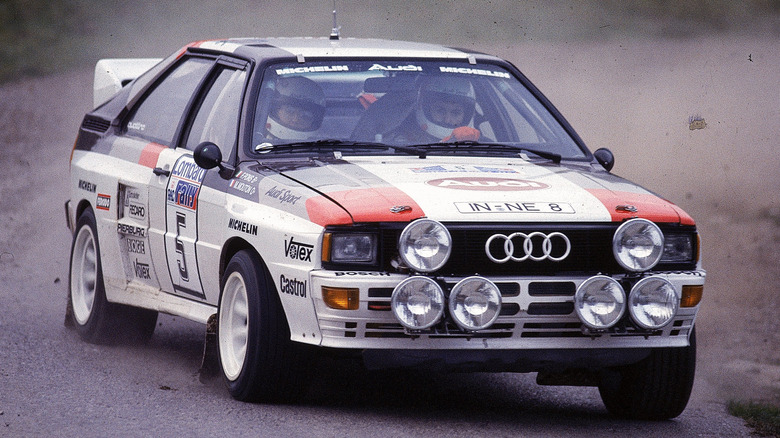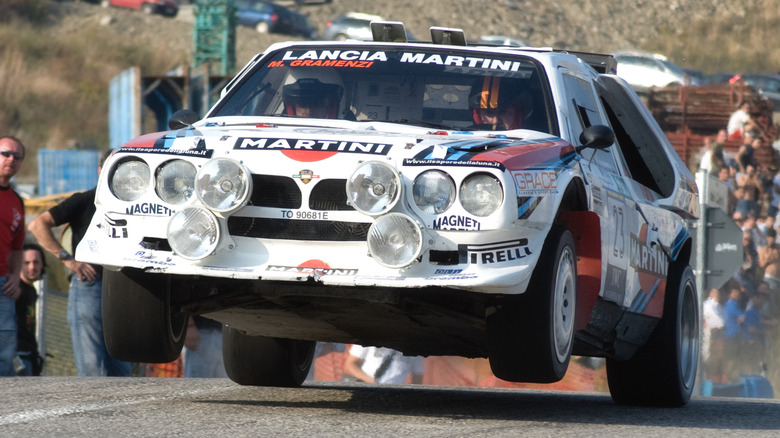Group B Rally Was One Of The Most Exciting Races Ever - Why Was It Discontinued?
The short, exciting era of Group B rally racing ran from 1982 to 1986 and saw impressive engineering, talented drivers, and tight competition. The FIA created this new class of cars to inject fresh life into the World Rally Championship (WRC); Group B rally cars were held to lower homologation standards than Group A cars. Several of the 12 fastest rally cars of all time were Group B entries, including the Audi Quattro and Lancia Rally 137. The FIA — which governs the WRC and Formula 1 racing — established Group B to integrate turbochargers and all-wheel drive and allow for looser homologation requirements.
Group A entries were restricted to models with a production run of at least 5,000 units, but only 200 sales would be necessary to get a car into Group B. Despite the cost and effort involved in developing new rally cars, Group B competitors included Audi, Peugeot, Lancia, and Ford. Here's the history behind Ford's legendary RS200 (and what made it so great). With the combination of insanely powerful cars with minimal safety equipment and crowds that watched from inches off the course, what could possibly go wrong? Group B racing proved to be dangerous to drivers and spectators alike, and two tragic crashes in 1986 forced the FIA to disband the category after that year.
Three Group B spectators and two drivers were killed in 1986
While Group B rallying was spectacular to watch, the lightweight, high-powered cars were a handful to manage whether on tarmac, dirt, mud, or snow. The drivers tasked with wrangling these 600-horsepower beasts included Walter Röhrl, Stig Blomqvist, Ari Vatanen, and Michele Mouton. Mouton was the first female driver to win a World Rally event, went on to win two more races, and finished second to Rörhl during the first year of Group B competition in 1982. According to The Stable, Finnish Group B driver Henri Toivonen described racing in the class as "like sitting on a box of TNT, igniting it and trying to control the explosion."
Those words proved sadly prophetic; Toivanen and co-driver Sergio Cresto died during the 1986 Tour de Corse rally in France when their Lancia glanced off a wall, went down a ravine, hit a tree, and exploded. Just two months earlier at the Rallye de Portugal in Porto, Joakim Santos had lost control of his Ford RS200 and hit a group of spectators, killing three and injuring more than 30 others. The danger to both fans and drivers was then clear to everyone involved, and the FIA made the prudent move to end the Group B experiment that season.

